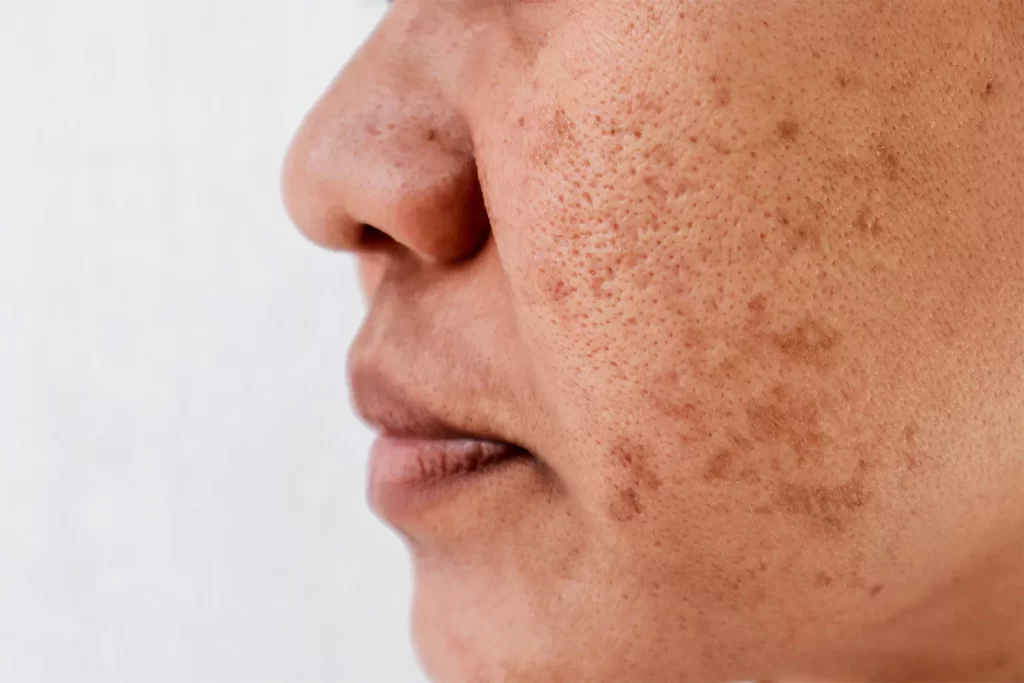
Mostly medical treatment gives limited results, since the depth of pigment is more in such cases.
Pigmentation of Face
Pigmentation of face can be classified according to cause.
- mealsama
- Freckle
- PIH
- Lichen planus pigmentosus
- Allergic dermatits
- Post acne pigmentation
- Facial melanosis
- Sun tanning
Types of Pigmentary Demarcation Lines
These differential areas of pigmentation appearing as lines, which are referred to as PDL is due to differences in melanocyte distribution that may be influenced by multiple factors.
Group A consisted of lines along the upper limb with variable trans-pectoral extension. The lines along the lower limb were termed as Group B. The lines on the chest and abdomen in the form of paired lines, median or paramedian were termed as Groups C. Group D PDL consisted of lines on the back, posteromedial demarcation. Bilaterally symmetrical, obliquely oriented, hypopigmented macules on chest were termed as Group E, which was the additional group added.
Etiopathogenesis
The etiology of PDL is unknown. Various theories have been proposed. PDL has been thought to coincide with the distribution of cutaneous nerve innervations.


Facial Pigmentary Demarcation Lines
Facial PDL may appear around puberty and may persist without much change throughout life. They may have a genetic predisposition. [5] Facial PDL may be even present from childhood and goes unnoticed, only to become prominent after certain triggering factors like hormonal changes at puberty or pregnancy. Few other triggering factors for Group F PDL reported are acute illnesses such as typhoid, chickenpox, and viral hepatitis.
Facial PDL present as bilaterally symmetrical, homogenous hyperpigmentation extending from lateral orbit or angle of mouth differentiating from melisma
Pigmentation of face /Melasma (Blemishes): Blemishes are commonly seen in females as brown patches on the cheeks, nose, forehead and upper lip. Precise cause is not known, but mostly seen in people having a family history, hormone changes (related to pregnancy), females on birth control pills and long term sun exposure.
Results:



Equipment

